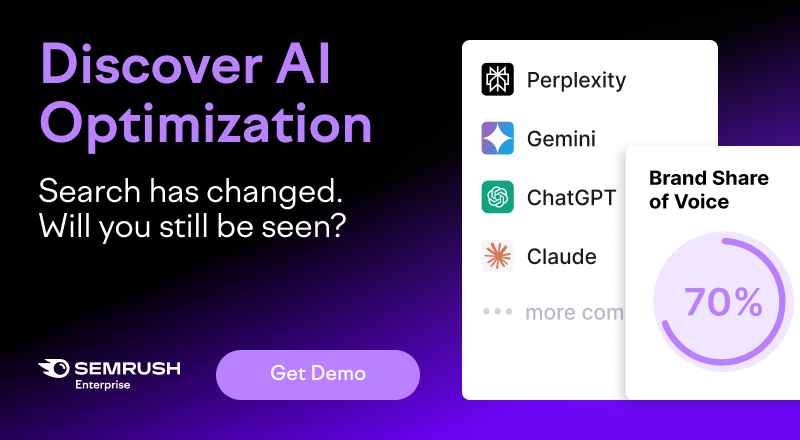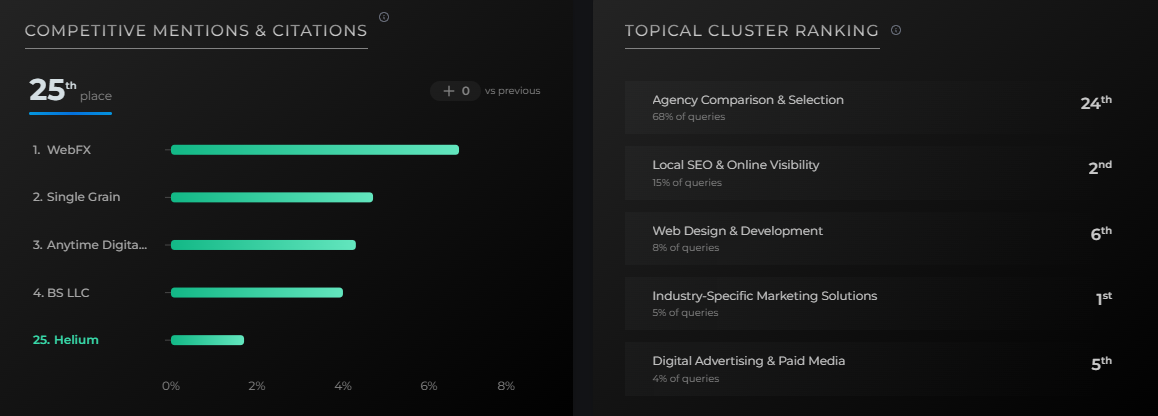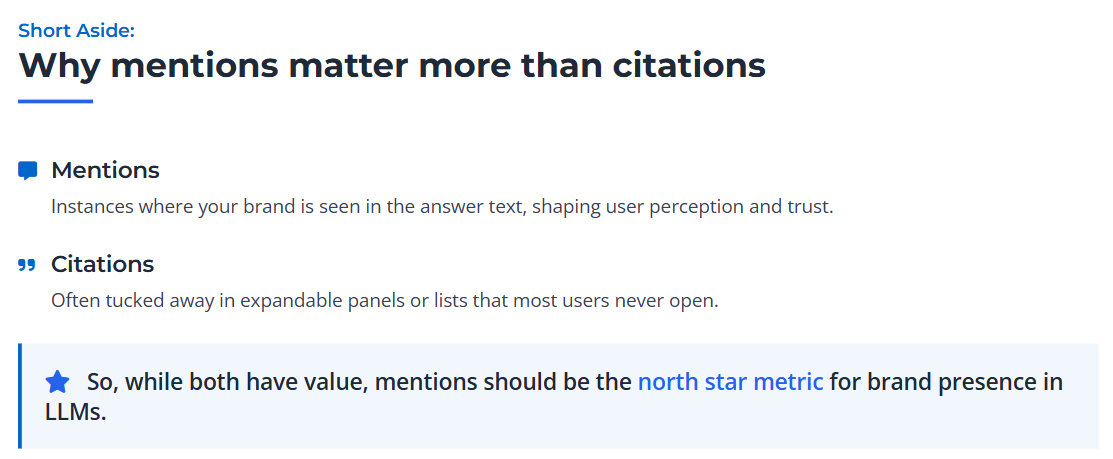LLM optimization in 2026: Tracking, visibility, and what’s next for AI discovery
Marketing, technology, and business leaders today are asking an important question: how do you optimize for large language models (LLMs) like ChatGPT, Gemini, and Claude?
LLM optimization is taking shape as a new discipline focused on how brands surface in AI-generated results and what can be measured today.
For decision makers, the challenge is separating signal from noise – identifying the technologies worth tracking and the efforts that lead to tangible outcomes.
The discussion comes down to two core areas – and the timeline and work required to act on them:
- Tracking and monitoring your brand’s presence in LLMs.
- Improving visibility and performance within them.
Tracking: The foundation of LLM optimization
Just as SEO evolved through better tracking and measurement, LLM optimization will only mature once visibility becomes measurable.
We’re still in a pre-Semrush/Moz/Ahrefs era for LLMs.
Tracking is the foundation of identifying what truly works and building strategies that drive brand growth.
Without it, everyone is shooting in the dark, hoping great content alone will deliver results.
The core challenges are threefold:
- LLMs don’t publish query frequency or “search volume” equivalents.
- Their responses vary subtly (or not so subtly) even for identical queries, due to probabilistic decoding and prompt context.
- They depend on hidden contextual features (user history, session state, embeddings) that are opaque to external observers.
Why LLM queries are different
Traditional search behavior is repetitive – millions of identical phrases drive stable volume metrics. LLM interactions are conversational and variable.
People rephrase questions in different ways, often within a single session. That makes pattern recognition harder with small datasets but feasible at scale.
These structural differences explain why LLM visibility demands a different measurement model.
This variability requires a different tracking approach than traditional SEO or marketing analytics.
The leading method uses a polling-based model inspired by election forecasting.

The polling-based model for measuring visibility
A representative sample of 250–500 high-intent queries is defined for your brand or category, functioning as your population proxy.
These queries are run daily or weekly to capture repeated samples from the underlying distribution of LLM responses.

Tracking tools record when your brand and competitors appear as citations (linked sources) or mentions (text references), enabling share of voice calculations across all competitors.
Over time, aggregate sampling produces statistically stable estimates of your brand visibility within LLM-generated content.
Early tools providing this capability include:
- Profound.
- Conductor.
- OpenForge.

Consistent sampling at scale transforms apparent randomness into interpretable signals.
Over time, aggregate sampling provides a stable estimate of your brand’s visibility in LLM-generated responses – much like how political polls deliver reliable forecasts despite individual variations.
Building a multi-faceted tracking framework
While share of voice paints a picture of your presence in the LLM landscape, it doesn’t tell the complete story.
Just as keyword rankings show visibility but not clicks, LLM presence doesn’t automatically translate to user engagement.
Brands need to understand how people interact with their content to build a compelling business case.
Because no single tool captures the entire picture, the best current approach layers multiple tracking signals:
- Share of voice (SOV) tracking: Measure how often your brand appears as mentions and citations across a consistent set of high-value queries. This provides a benchmark to track over time and compare against competitors.
- Referral tracking in GA4: Set up custom dimensions to identify traffic originating from LLMs. While attribution remains limited today, this data helps detect when direct referrals are increasing and signals growing LLM influence.
- Branded homepage traffic in Google Search Console: Many users discover brands through LLM responses, then search directly in Google to validate or learn more. This two-step discovery pattern is critical to monitor. When branded homepage traffic increases alongside rising LLM presence, it signals a strong causal connection between LLM visibility and user behavior. This metric captures the downstream impact of your LLM optimization efforts.
Nobody has complete visibility into LLM impact on their business today, but these methods cover all the bases you can currently measure.
Be wary of any vendor or consultant promising complete visibility. That simply isn’t possible yet.
Understanding these limitations is just as important as implementing the tracking itself.
Because no perfect models exist yet, treat current tracking data as directional – useful for decisions, but not definitive.

Dig deeper: In GEO, brand mentions do what links alone can’t
Estimating LLM ‘search volume’
Measuring LLM impact is one thing. Identifying which queries and topics matter most is another.
Compared to SEO or PPC, marketers have far less visibility. While no direct search volume exists, new tools and methods are beginning to close the gap.
The key shift is moving from tracking individual queries – which vary widely – to analyzing broader themes and topics.
The real question becomes: which areas is your site missing, and where should your content strategy focus?
To approximate relative volume, consider three approaches:
Correlate with SEO search volume
Start with your top-performing SEO keywords.
If a keyword drives organic traffic and has commercial intent, similar questions are likely being asked within LLMs. Use this as your baseline.
Layer in industry adoption of AI
Estimate what percentage of your target audience uses LLMs for research or purchasing decisions:
- High AI-adoption industries: Assume 20-25% of users leverage LLMs for decision-making.
- Slower-moving industries: Start with 5-10%.
Apply these percentages to your existing SEO keyword volume. For example, a keyword with 25,000 monthly searches could translate to 1,250-6,250 LLM-based queries in your category.
Using emerging inferential tools
New platforms are beginning to track query data through API-level monitoring and machine learning models.
Accuracy isn’t perfect yet, but these tools are improving quickly. Expect major advancements in inferential LLM query modeling within the next year or two.
Get the newsletter search marketers rely on.
See terms.
Optimizing for LLM visibility
The technologies that help companies identify what to improve are evolving quickly.
While still imperfect, they’re beginning to form a framework that parallels early SEO development, where better tracking and data gradually turned intuition into science.
Optimization breaks down into two main questions:
- What content should you create or update, and should you focus on quality content, entities, schema, FAQs, or something else?
- How should you align these insights with broader brand and SEO strategies?
Identify what content to create or update
One of the most effective ways to assess your current position is to take a representative sample of high-intent queries that people might ask an LLM and see how your brand shows up relative to competitors. This is where the Share of Voice tracking tools we discussed earlier become invaluable.
These same tools can help answer your optimization questions:

- Track who is being cited or mentioned for each query, revealing competitive positioning.
- Identify which queries your competitors appear for that you don’t, highlighting content gaps.
- Show which of your own queries you appear for and which specific assets are being cited, pinpointing what’s working.

From this data, several key insights emerge:
- Thematic visibility gaps: By analyzing trends across many queries, you can identify where your brand underperforms in LLM responses. This paints a clear picture of areas needing attention. For example, you’re strong in SEO but not in PPC content.
- Third-party resource mapping: These tools also reveal which external resources LLMs reference most frequently. This helps you build a list of high-value third-party sites that contribute to visibility, guiding outreach or brand mention strategies.
- Blind spot identification: When cross-referenced with SEO performance, these insights highlight blind spots; topics or sources where your brand’s credibility and representation could improve.
Understand the overlap between SEO and LLM optimization
LLMs may be reshaping discovery, but SEO remains the foundation of digital visibility.
Across five competitive categories, brands ranking on Google’s first page appeared in ChatGPT answers 62% of the time – a clear but incomplete overlap between search and AI results.
That correlation isn’t accidental.
Many retrieval-augmented generation (RAG) systems pull data from search results and expand it with additional context.
The more often your content appears in those results, the more likely it is to be cited by LLMs.
Brands with the strongest share of voice in LLM responses are typically those that invested in SEO first.
Strong technical health, structured data, and authority signals remain the bedrock for AI visibility.
What this means for marketers:
- Don’t over-focus on LLMs at the expense of SEO. AI systems still rely on clean, crawlable content and strong E-E-A-T signals.
- Keep growing organic visibility through high-authority backlinks and consistent, high-quality content.
- Use LLM tracking as a complementary lens to understand new research behaviors, not a replacement for SEO fundamentals.
Redefine on-page and off-page strategies for LLMs
Just as SEO has both on-page and off-page elements, LLM optimization follows the same logic – but with different tactics and priorities.
Off-page: The new link building
Most industries show a consistent pattern in the types of resources LLMs cite:
- Wikipedia is a frequent reference point, making a verified presence there valuable.
- Reddit often appears as a trusted source of user discussion.
- Review websites and “best-of” guides are commonly used to inform LLM outputs.
Citation patterns across ChatGPT, Gemini, Perplexity, and Google’s AI Overviews show consistent trends, though each engine favors different sources.
This means that traditional link acquisition strategies, guest posts, PR placements, or brand mentions in review content will likely evolve.
Instead of chasing links anywhere, brands should increasingly target:
- Pages already being cited by LLMs in their category.
- Reviews or guides that evaluate their product category.
- Articles where branded mentions reinforce entity associations.
The core principle holds: brands gain the most visibility by appearing in sources LLMs already trust – and identifying those sources requires consistent tracking.
On-page: What your own content reveals
The same technologies that analyze third-party mentions can also reveal which first-party assets, content on your own website, are being cited by LLMs.
This provides valuable insight into what type of content performs well in your space.
For example, these tools can identify:
- What types of competitor content are being cited (case studies, FAQs, research articles, etc.).
- Where your competitors show up but you don’t.
- Which of your own pages exist but are not being cited.
From there, three key opportunities emerge:
- Missing content: Competitors are cited because they cover topics you haven’t addressed. This represents a content gap to fill.
- Underperforming content: You have relevant content, but it isn’t being referenced. Optimization – improving structure, clarity, or authority – may be needed.
- Content enhancement opportunities: Some pages only require inserting specific Q&A sections or adding better-formatted information rather than full rewrites.
Leverage emerging technologies to turn insights into action
The next major evolution in LLM optimization will likely come from tools that connect insight to action.
Early solutions already use vector embeddings of your website content to compare it against LLM queries and responses. This allows you to:
- Detect where your coverage is weak.
- See how well your content semantically aligns with real LLM answers.
- Identify where small adjustments could yield large visibility gains.
Current tools mostly generate outlines or recommendations.
The next frontier is automation – systems that turn data into actionable content aligned with business goals.
Timeline and expected results
While comprehensive LLM visibility typically builds over 6-12 months, early results can emerge faster than traditional SEO.
The advantage: LLMs can incorporate new content within days rather than waiting months for Google’s crawl and ranking cycles.
However, the fundamentals remain unchanged.
Quality content creation, securing third-party mentions, and building authority still require sustained effort and resources.
Think of LLM optimization as having a faster feedback loop than SEO, but requiring the same strategic commitment to content excellence and relationship building that has always driven digital visibility.
From SEO foundations to LLM visibility
LLM traffic remains small compared to traditional search, but it’s growing fast.
A major shift in resources would be premature, but ignoring LLMs would be shortsighted.
The smartest path is balance: maintain focus on SEO while layering in LLM strategies that address new ranking mechanisms.
Like early SEO, LLM optimization is still imperfect and experimental – but full of opportunity.
Brands that begin tracking citations, analyzing third-party mentions, and aligning SEO with LLM visibility now will gain a measurable advantage as these systems mature.
In short:
- Identify the third-party sources most often cited in your niche and analyze patterns across AI engines.
- Map competitor visibility for key LLM queries using tracking tools.
- Audit which of your own pages are cited (or not) – high Google rankings don’t guarantee LLM inclusion.
- Continue strong SEO practices while expanding into LLM tracking – the two work best as complementary layers.
Approach LLM optimization as both research and brand-building.
Don’t abandon proven SEO fundamentals. Rather, extend them to how AI systems discover, interpret, and cite information.






Recent Comments